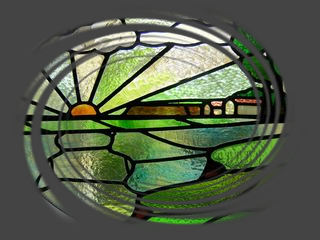 | Ichthyosaurs and Plesiosaurs Information... |
Ichthyosaurs & Plesiosaurs are extinct, now fossilised Sea Reptiles that are found in mesozoic rocks around the world.
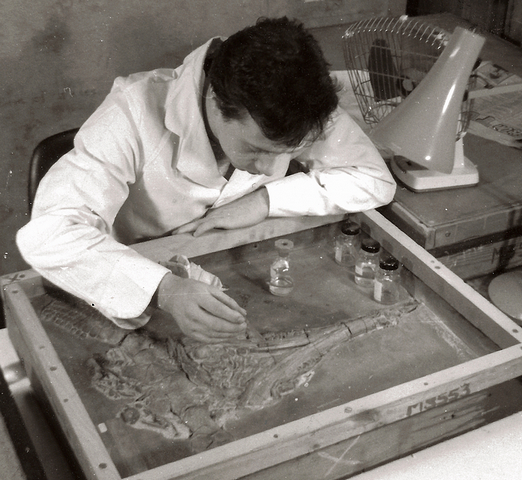
One day as a child, out walking the beach between Ravenscar and Robin Hoods Bay with my Grandfather we happened upon a very weathered set of bones in the shape of a paddle which I was allowed to excavate and take home. Somehow this inspired an interest which became a passion and led to an education and then a career.
In my early geological career I had the pleasure of working on cleaning a major collection of these creatures which are housed in the National Museum of Wales in Cardiff, Wales. These wonderful creatures were from the Charles Moore (an Ilminster born geologist 1815-1881) collection which had been on display in the old Bath Royal Scientific and Literary institusion and had been on display in a set of rooms that were lit by gas and heated by open fires and so they were heavily covered in black deposits. After that they had even more varied storage in unheated and unlit rooms and were moved many times including to Bristom Museum during WWII (they were luckily stored in the basement when the upper floord of the Bristol Museum were destroyed by bombing). These wonderful fossils were in fact his second major collection, the first having been sold to the Natural History Museum in 1890.
As I cleaned the specimens for display I had the pleasure of seeing the black and indistinct bones change to a creamy light brown colour and the dark brown rocks become a light grey.
Even more interesting I saw sections of the body cavities stay a dark black and when I looked at this with a microscope I was amazed to see stomach contents from the animals last meals. After much research it was determined that these had in fact been seen before, but not since the late 1800s had they been visible as they were covered in layers of soot and grime.
For the rest of my life I will carry those memories and the interest that they have fired up in my remains to this day.
I also had the pleasure of working on fossils from the Alfred Nichols Leeds collection which included a number of Plesiosaurs including Cryptoclidus oxoniensis and there is one speciment that I did some cleaning on still on show in the gallery in the National Museum.
Ichthyosaurs (Greek for "fish lizard" ichthys meaning "fish" and sauros meaning "lizard") are large extinct marine reptiles

Ichthyosaur Eye

Ichthyosaur Stomach Contents
Ichthyosaur although reptiles looked quite like dolphins, but with a vertical instead of a horizontal one. Species varied from as small as one meter one to over sixteen metres in length. Their flippers sometimes contained a very large number of digits and phalange bones. At least some species possessed a dorsal fin.
Their heads were pointed, and the jaws of many had conical teeth to catch smaller prey, but others had larger, bladed teeth with which they could attack large animals. The eyes were very large, probably useful when deep diving. The eyes of many had bony plates around large eyes suggesting they hunted in deep dark water.
Ichthyosaurs were viviparous, i.e. bore live young instead of laying eggs which is very odd for a reptile, but necessary if a creature has become fully modified for an aquatic life. A number of fossils of Ichthyosaurs have been found with fetuses in the body cavity.
Different Icthyosaurs will have had different prey, but a number of them are known to have preyed on Ammonites and Belemnites which are two extinct forms of cephalopods which had hooks on their tenticles. The hooks are often found as the stomach contents as I mentioned above. The Picture here is not from those specimens, but the collection that is described below
if you want to see a picture of what they would have looked like in their hayday here are a couple of interpretations which show how ideas have changed.
The First is from Duria Antiquior which is a watercolour painted in 1830 by the English geologist Henry De la Beche based on fossils found in Lyme Regis, Dorset, mostly by the professional fossil collector Mary Anning.
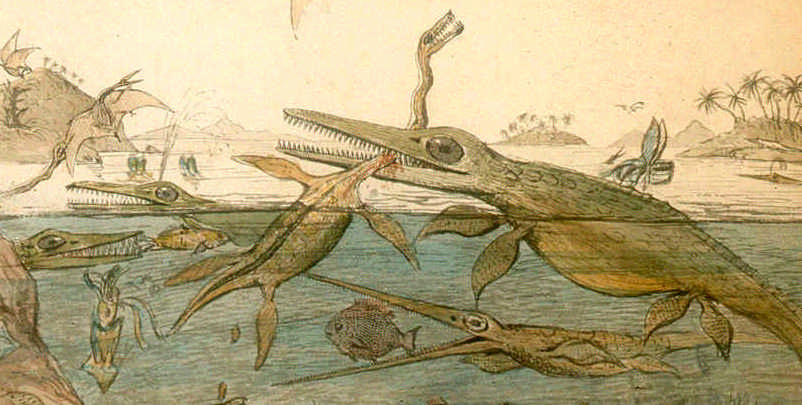
The second image is Ichthyosaurus communis Conybeare, 1822 done in 2016 by modern artist Nobu Tamura. Image used under CC licence spinops.blogspot.com (N. Tamura)
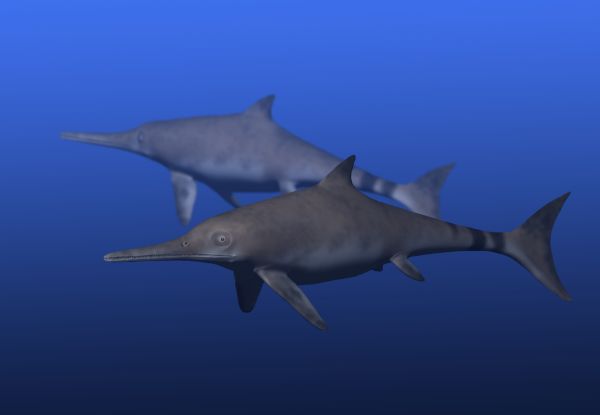
Plesiosaur meaning "near to" and sauros, meaning "lizard" is another branch of the Extinct reptile family. They had a very different body shape with four large flippers for propulsion rather than a fish or dolphin like tail. They were powered by strong muscles attached to wide bony plates formed by the shoulder girdle and the pelvis. The flippers made a flying movement through the water.
The Duria Antiquior picture above shows an early reconstruction of a plesiosaur being attacked by the ichthyosaur
Like the ichthyosaurs above it is currently thought that they gave birth to live young and actively hinted as carnovores. The one below is called Cryptoclidus oxoniensis and is a similar specimen to the one I worked on. It is a relatively small species, there are much larger species of plesiosaurs.
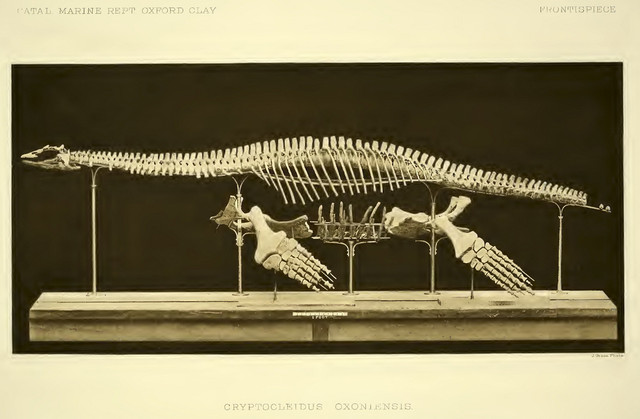
The pictures in the gallery had not been identified at the time I took these pictures. The preperation was underway, but there was still a lot to do.
In 2009 I was able to take part in a conference of distinguished scientists ( I was mostly listening you understand ) who described how these creatures had lived, died and been preserved.
During the break time people put on show some wonderful specimens and after the event we were taken to a private viewing of an historically important collection that is not currently on public display (although there are occasional open days and a plan for a museum to be built)
Most of the images you see on in this gallery were taken during that conference. Some of the specimens on show were owned by Simon Carpenter & Paddy Howe to whom I owe thanks for allowing me to show pictures of their specimens. The rest must remain anonymous as agreed by the owners for now.
The final picture in this gallery is of a very young me, cleaning one of the Moore specimens
With such interesting creatures as these there is a lot of information available both popular science and in depth research. There is also a wealth of historical information available regarding the discovery, collection and early identification of these fascinating creatures here are a few useful links
Composite skeletons of Ichthyosaurus in historic collections Includes some of the ones I cleaned.
https://en.wikipedia.org/wiki/Plesiosauria
-->